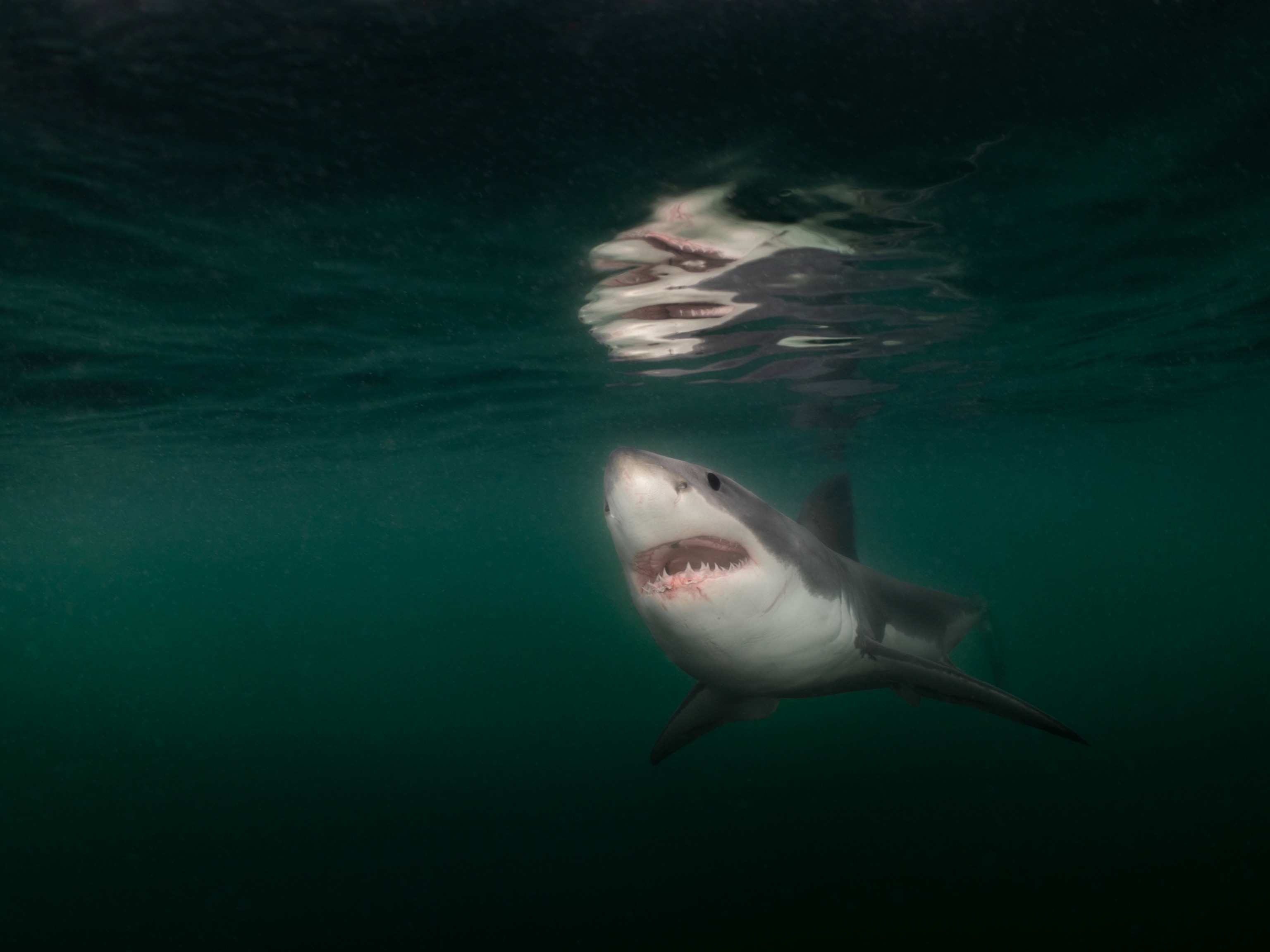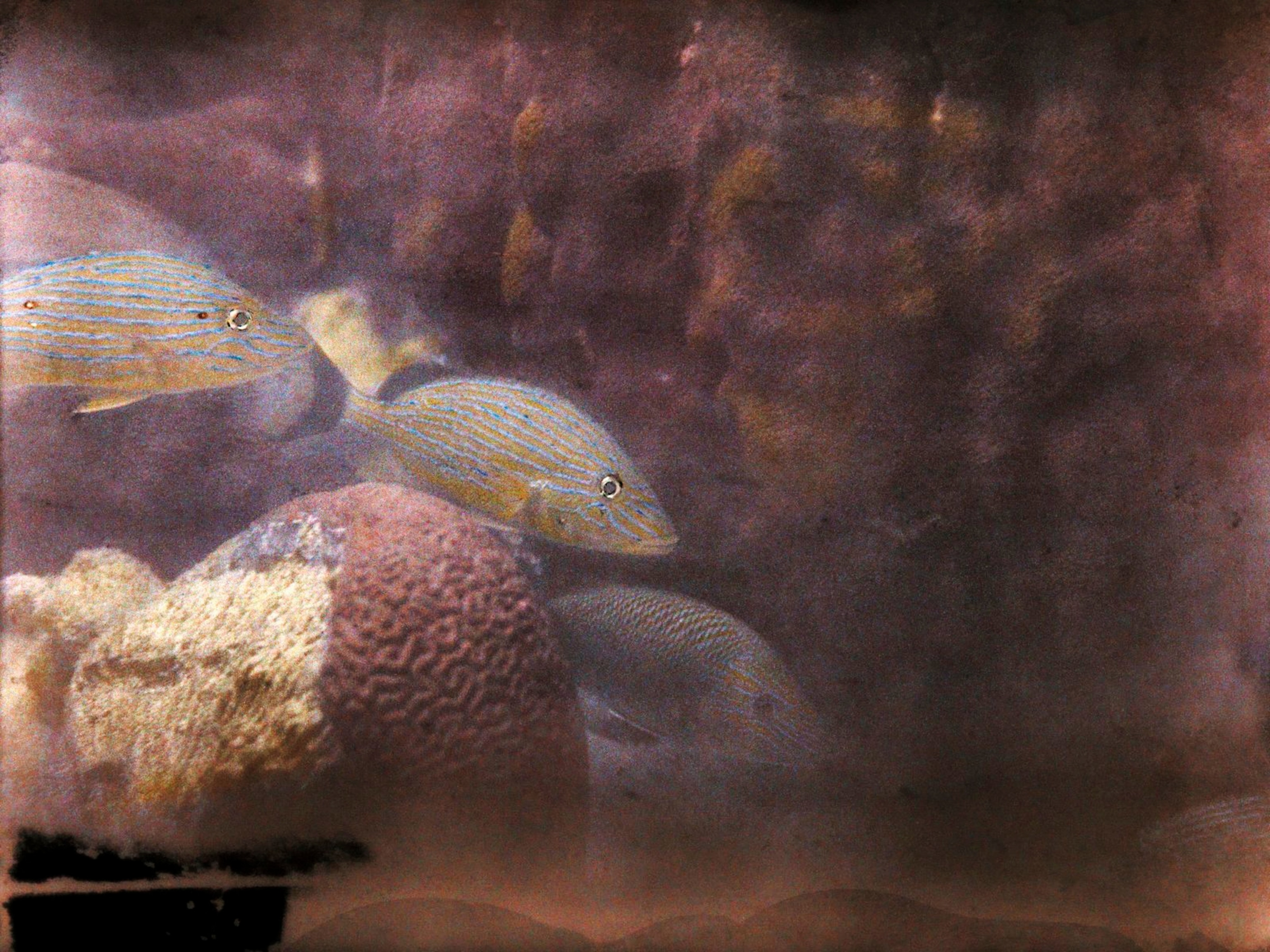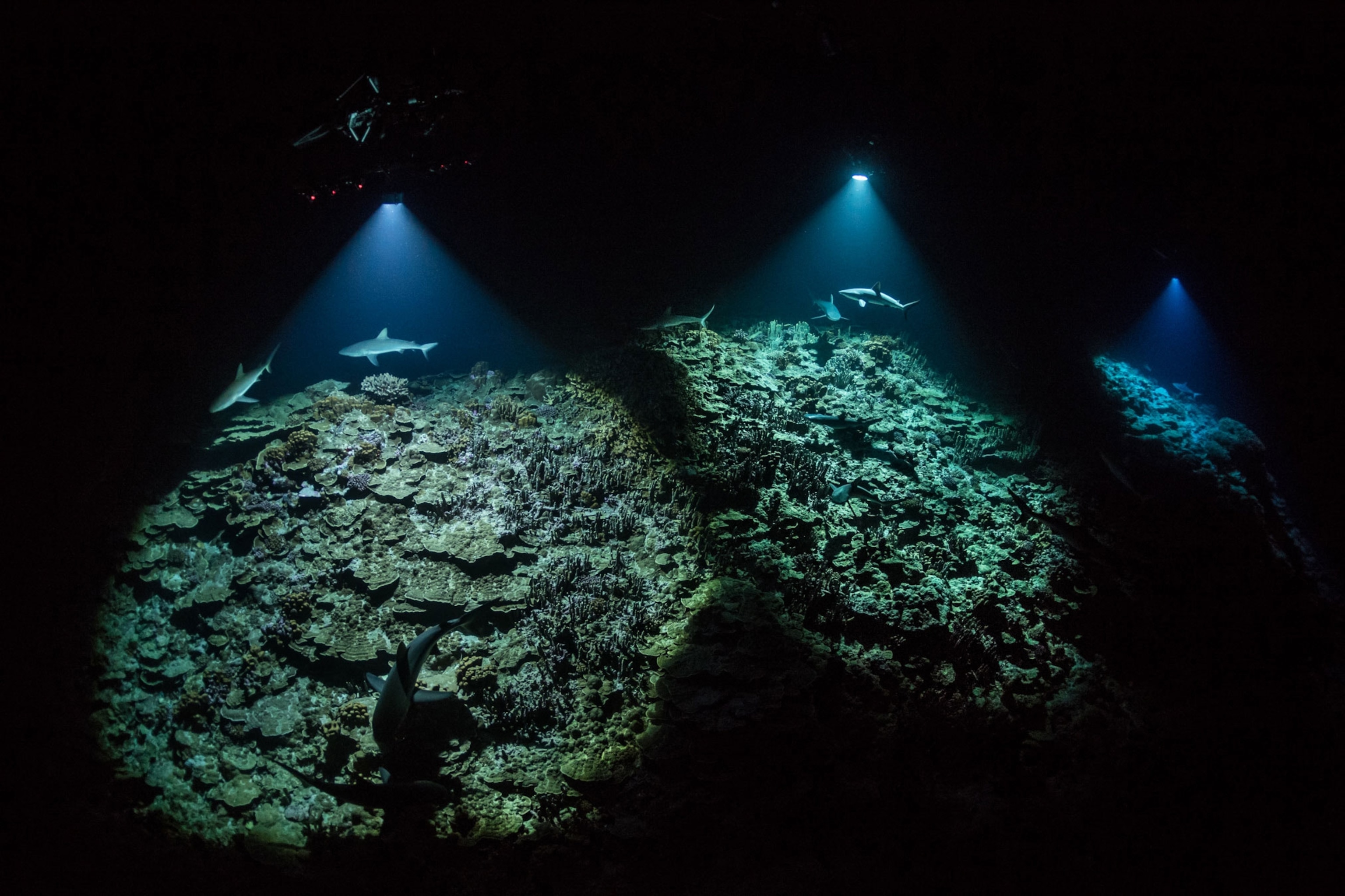
He Wanted to Photograph a Shark Feeding Frenzy. It Took 3,000 Dive Hours
Laurent Ballesta has spent four years returning to the Fakarava Atoll where sharks and grouper swarms face off in a battle for survival.
Underwater photographer Laurent Ballesta had a mission: To photograph massive schools of marbled grouper that gather to spawn in the Fakarava Atoll, part of French Polynesia.
The challenge? Grouper spawn only once a year under the full moon in June or July, and only for about 30 minutes, Ballesta says.
When a naturalist goes into the wild for an extended period of time, there are many things they need to bring. Air to breathe is not one of them.
So how do underwater photographers create the luxury of time you need to truly understand the environment you are exploring? Ballesta had been pondering this question for years, and in 2014, he found a solution.
Working carefully with his friend Jean-Marc Belin, he created a dive protocol that would allow him to spend a full 24 hours 65 feet under the ocean while limiting the amount of time it takes to decompress from 20 hours to just six—the first dive of its kind.
The feat required careful calibration to come up with the exact right mix of gases in his oxygen tank, a dedicated dive team, and a large degree of mental fortitude.
Most of all, it was a way to achieve a long-held dream of observing marine life, uninterrupted.

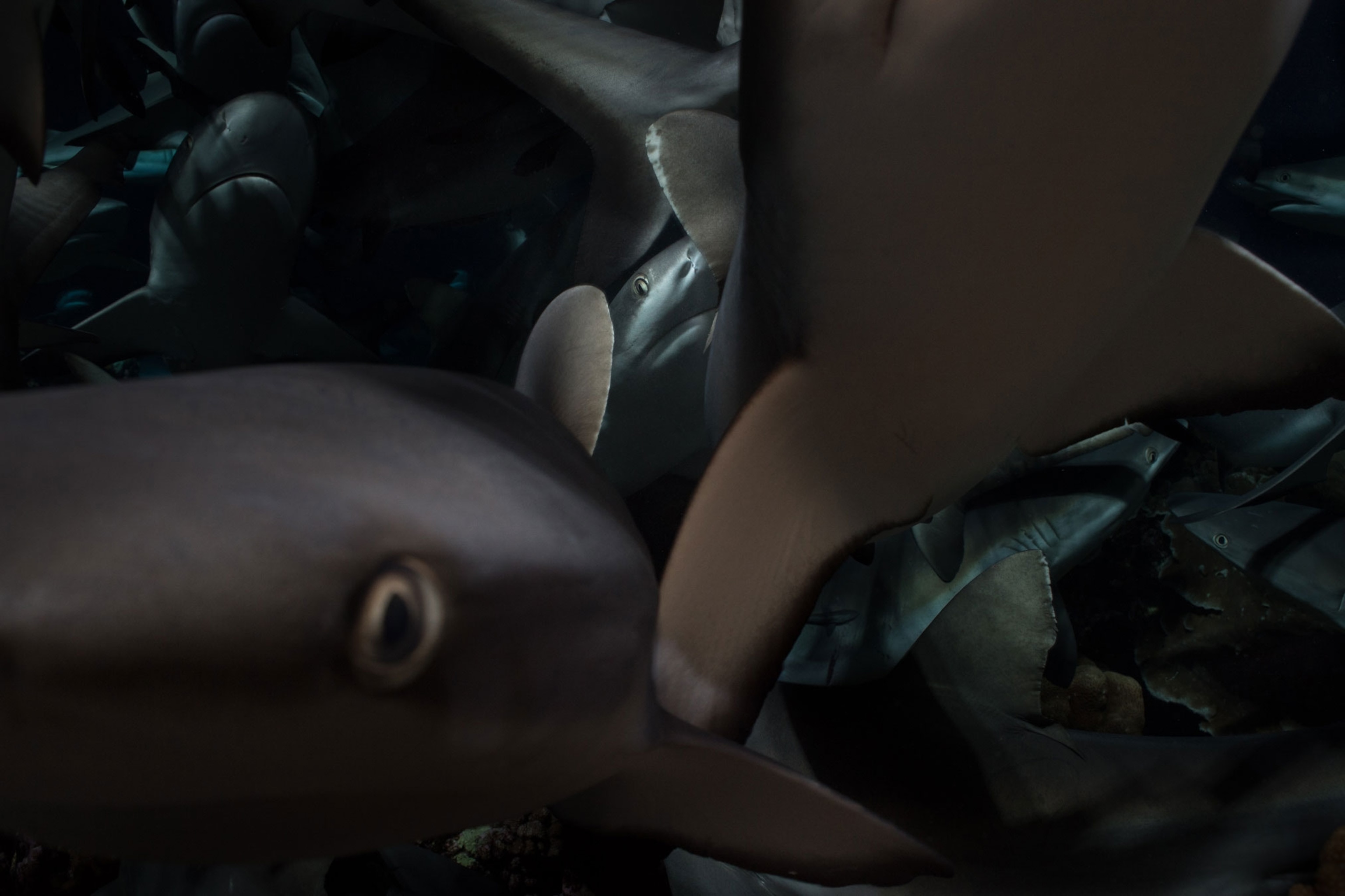
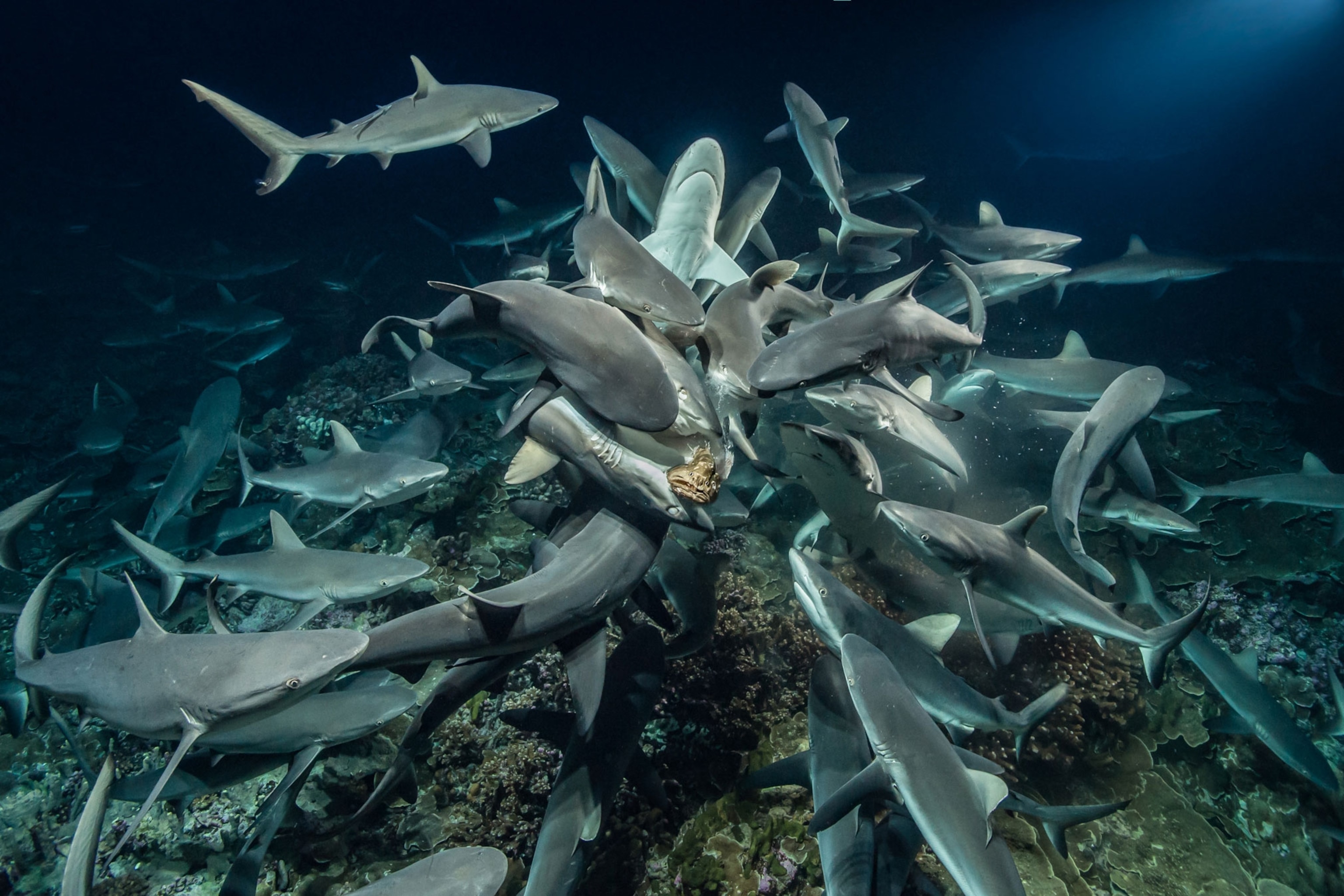
Keeping Calm
When he finally began his dive, in 2014, Ballesta was periodically joined by team members who recharged his rebreather and illuminated his way after the sun went down.
His carefully planned strategy worked: Ballesta found not only thousands of grouper, but hundreds of gray reef sharks that came out at night to feed.
“The first year, we dove above [the sharks], and our knees were bent up to our shoulders,” he says. (See more amazing underwater photographs.)
Without the perceived protection of a shark cage or a metal shark suit, “it took time to develop the intuition that we would not get bitten,” Ballesta says.
“We had to feel confident enough that when they bump up against us, so hard that sometimes we have bruises, we have to keep calm. They are considering us as obstacles, not prey.”
Fascinated by this epic battle—groupers suffering grievous injuries from the jaws of hungry sharks and still surviving to mate—Ballesta returned to the same spot for the next four years. (Read more about Ballesta's experience in the May issue of National Geographic.)
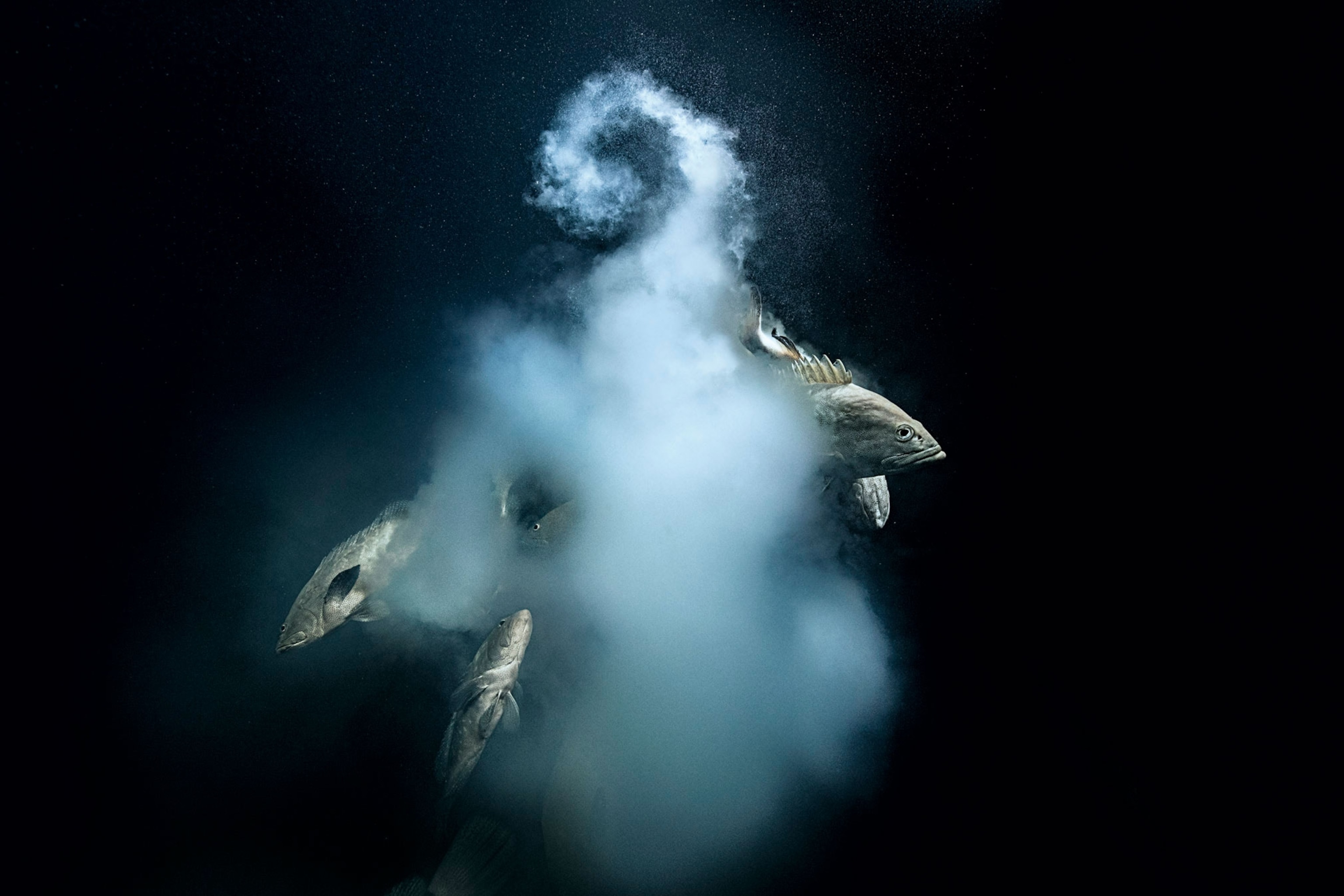
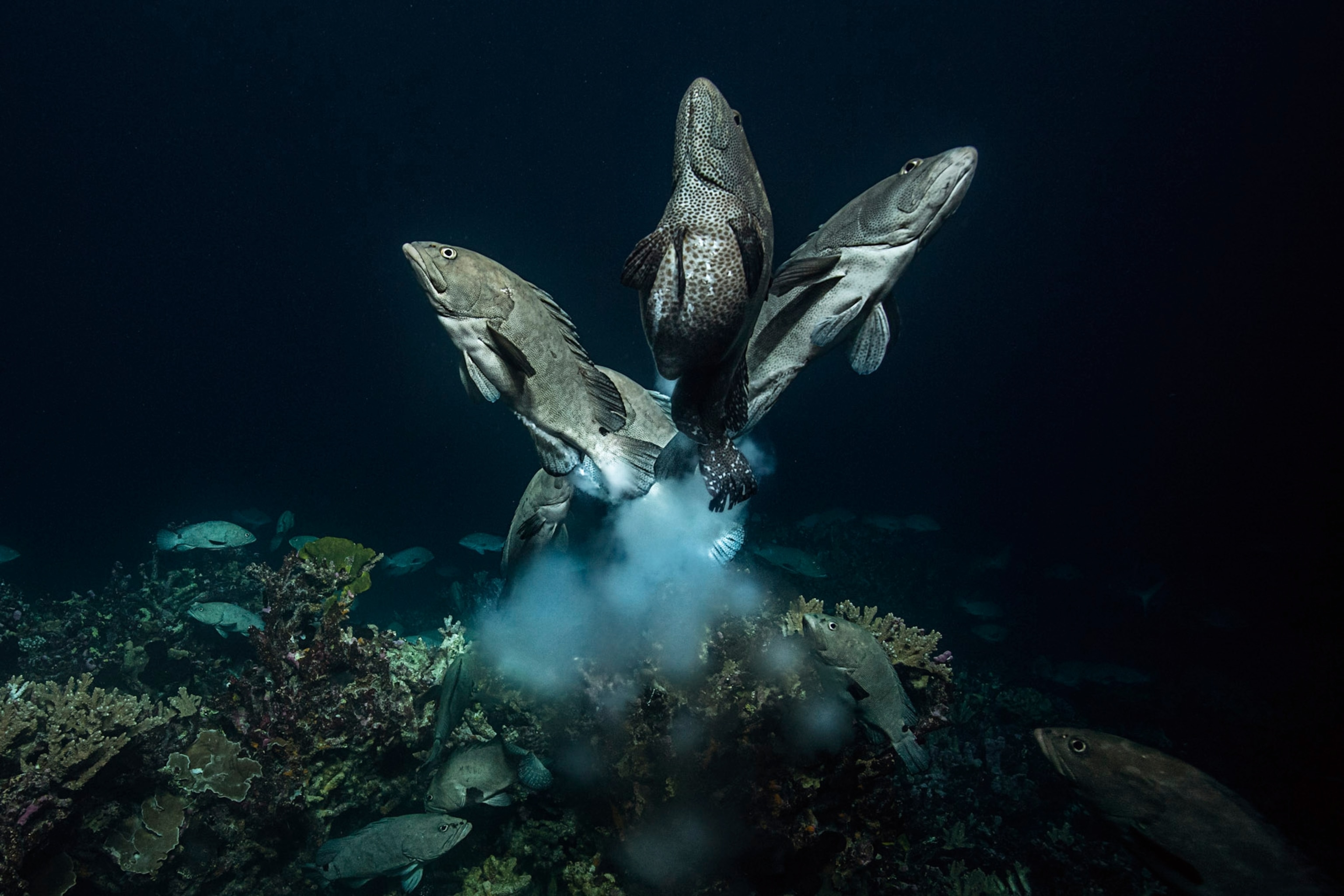
No Hate in Nature
Another challenge was how to capture the drama of this fast action scene playing out in low light and shifting currents. (See photos of sharks and more ocean wildlife.)
Along with his team, he devised a semicircular rig onto which he affixed a set of strobes and one continuous-beam light. His dive partner Cédric Gentil swam above him, orienting the bar depending on what Ballesta wanted to photograph.
“I tried my best to show the beauty, the choreography, of these predation behaviors. Gore is attractive, but it’s time to attract people with the harmony of wildlife,” says Ballesta, who compiled his photographs into a two-book set called 700 Sharks Into the Dark.
“Wildlife is without mercy, but wildlife is also without hate.”

You can see more of Laurent Ballesta’s work on his website.


